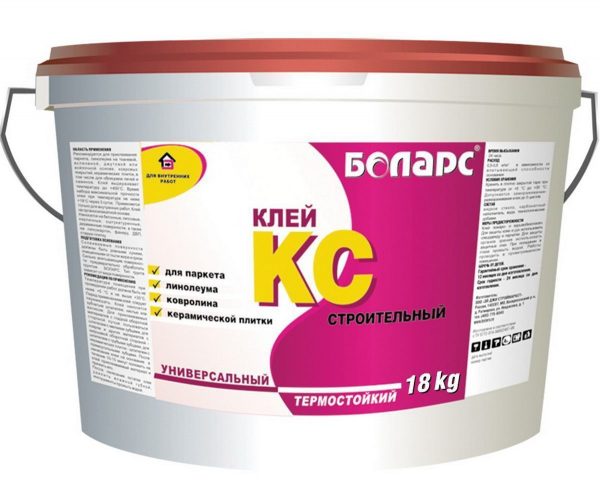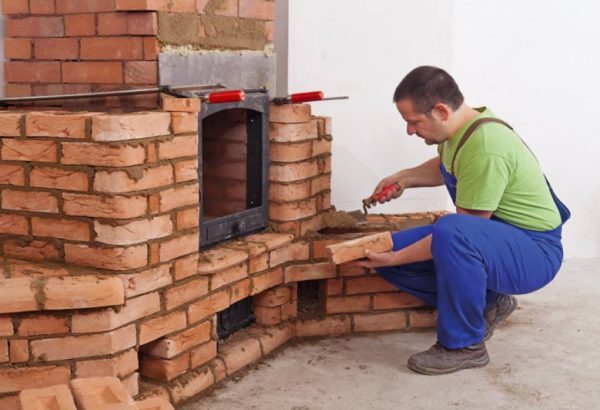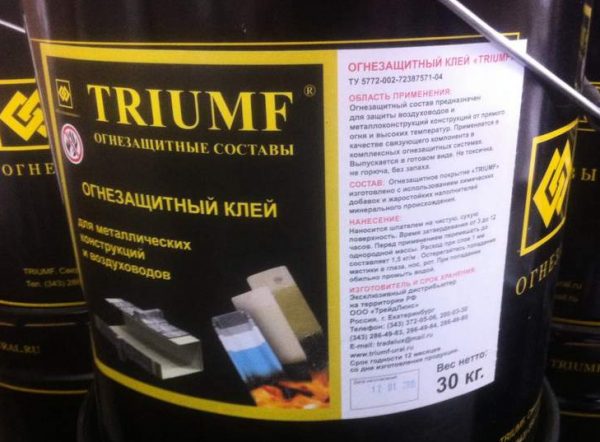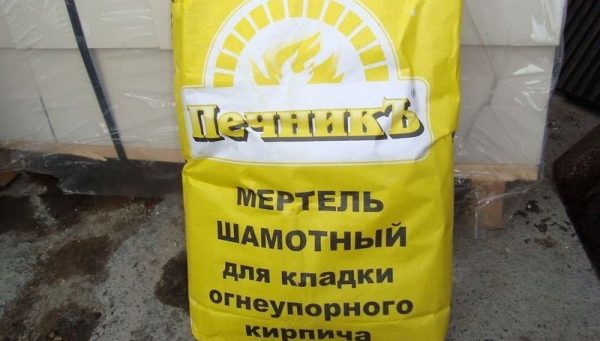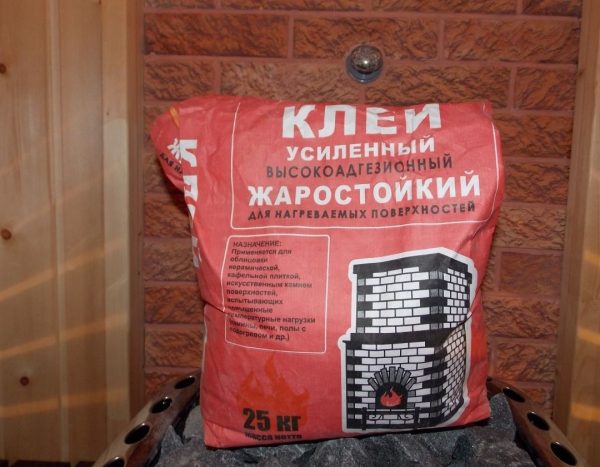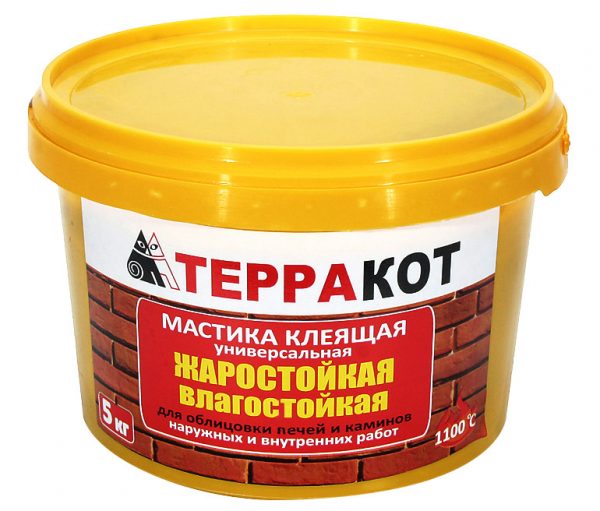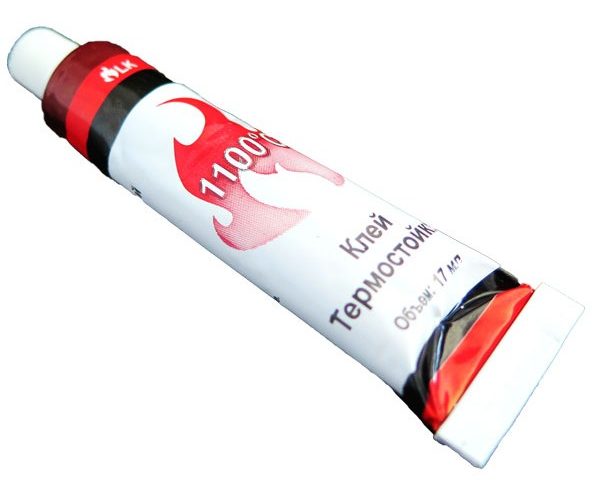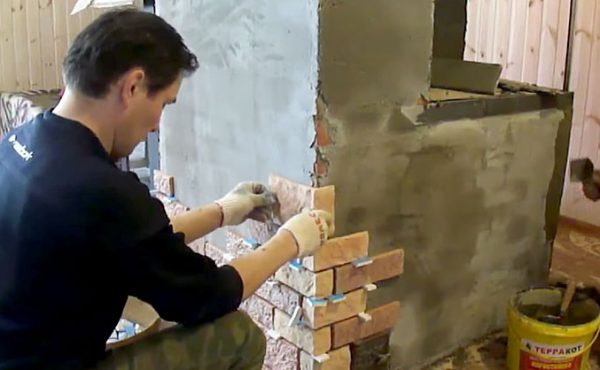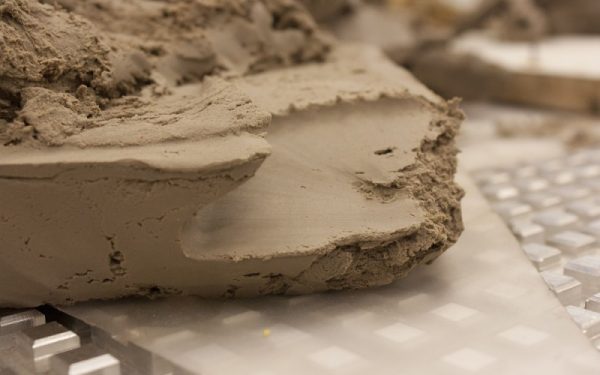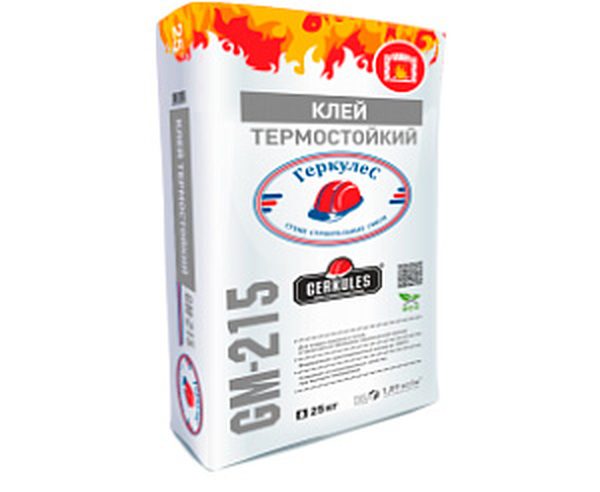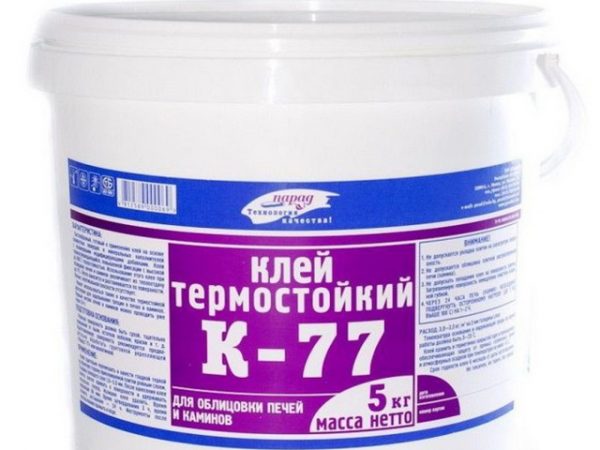Installation of stoves and fireplaces is now very popular in private houses, cottages. Stoves are most often mounted in utility rooms, fireplaces, in contrast, in the central room, where the whole family gathers. High-quality construction of such structures is possible only with the use of suitable adhesive compositions, which will ensure the reliability of the masonry. Usually a special heat-resistant adhesive based on minerals, resins and other components is used.
- What is heat-resistant adhesive - description
- Scope of application
- Properties and types of heat-resistant base
- Adhesive Requirements
- Advantages and disadvantages of heat-resistant adhesives
- Types and components of glue
- The basis for working with metals
- Glass base
- Adhesive for ovens
- Rules of work and safety measures
- DIY glue making
- Popular brands
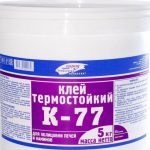
What is heat-resistant adhesive - description
Heat-resistant glue is understood to mean a finished or powder construction composition of epoxy resin and metal chips or based on mineral components that withstands high temperatures during operation. Viscous solutions are used as tile adhesive, a means for lining heated surfaces. The main substance of the compositions for gluing household products is epoxy, which ensures the bonding of all other components. Also, to obtain the desired density, elasticity, and safety, heat-resistant glue may include:
- modifiers
- plasticizers;
- setting time adjusters;
- sulfur, etc.
Glues are specialized (for metal, plastic, glass, tile, wood, etc.), as well as universal, suitable for any material. The latter have a clear advantage - they can be used to decorate all parts of the fireplace, since decorative qualities are usually at a high level.
to contents ↑Scope of application
You can use the funds for exterior and interior use on a wide variety of materials. High-temperature glue is suitable not only for heating, but also for conventional substrates made of alloys and metals, graphite, plastic, ceramics, rubber and most other materials.
Most often, adhesives are used in the furnace business due to undeniable advantages: they are easy and quick to prepare and can boast of technological stability even with unprofessional application. Compared to a clay solution, modern combined heat-resistant adhesives do not need to be kneaded for a long time, they do not form lumps. In addition to facing the vertical and horizontal surfaces of the furnace, you can use glue for the complete masonry of the entire structure, but you need to choose the highest quality refractory composition. In addition, with the help of glue it is possible to build or decorate:
- heat technological furnaces;
- fireplaces;
- blacksmith horns;
- cupolas;
- muffle furnaces.
to contents ↑If the glue is heat resistant, it can be used to repair the glass of the oven, hob, stove, to seal the cords, to install other components that are exposed to heat. Some products are even suitable for gluing cookware, as they do not contain toxic compounds.
Properties and types of heat-resistant base
The temperature range at which certain adhesives are used is wide.It is due to the composition and production technology of the adhesive. Depending on the base, the properties of adhesives differ, therefore they withstand different temperature conditions during operation:
- Heat-resistant adhesive. At a temperature of at least +140 degrees, this composition functions without a decrease in strength characteristics.
- Heat-resistant adhesive. It works from -10 to +300 degrees.
- Heat-resistant (heat-resistant, heat-resistant) glue. It is enhanced in terms of heat resistance, does not lose quality at temperatures up to 1000 degrees.
- Fire resistant adhesive. It transfers contact with an open flame for 3 hours or more, is chemically stable and does not react with active fuel particles that are present in the visible part of the flame.
- Refractory adhesive. Withstands contact with fire for unlimited time. The default is heat resistant.
Among the basics for the manufacture of glue, various minerals are used. The best indicators of heat resistance are shown by such components:
- Clay and cement. As additives to them are sand, fireclay fiber, which plays the role of a plasticizer. Clay-cement binder is the cheapest, but has poor adhesion. Most often used for laying brick ovens. Withstands up to +1200 degrees.
- Aluminosilicate cement and kaolin. Additives to the composition - water glass, quartz sand. The adhesion of the agent is higher, in addition, aluminum, silicates and kaolin allow maintaining heat resistance up to +1360 degrees. Minus - reduced ductility. Typically, the composition is used to decorate stoves, fireplaces with tiles and porcelain tiles.
- Silica-alumina cement, clay and talc-chlorite flour. The last component is also called potted stone, it is widely used in furnace business. The finished composition has a high degree of adhesion, forms a high-strength seam, withstanding up to +1500 degrees. It goes well with any furnace and finishing materials, it is able to translate hard thermal radiation into soft. The downside is the high price.
Adhesive Requirements
In addition to heat resistance, the coefficient of thermal expansion of the adhesive layer after complete drying is of great importance among the properties. It should conflict with the same indicator for the main material. Full coincidence of the coefficients is impossible, any glue must remain plastic even with a high thickness of the seam. That is why the manufacturer indicates on the packaging of each product its suitability for specific materials.
Other requirements for the properties of heat-resistant adhesives:
- elasticity of the seam, the ability to preserve the structure of the masonry for a long time without destruction and to extend its life;
- resistance to temperature extremes, including their sharp decrease;
- moisture resistance - the ability to work in high humidity, the absence of damage in direct contact with water;
- strength and wear resistance of the adhesive joint;
- gas impermeability of the layer;
- if necessary - frost resistance;
- high-quality heat transfer;
- environmental Safety.
If glue will be used for finishing work, it is important to evaluate its adhesive ability or the stickiness of the solution. When the adhesive is too viscous, has poor adhesion, it will not be able to firmly adhere the lining to a vertical or steeply inclined base. Too sticky and liquid composition will completely slide along with the finish to dry.
to contents ↑Advantages and disadvantages of heat-resistant adhesives
Means of this type are in high customer demand. This is due to the large number of advantages of heat-resistant compounds:
- affordability and availability in every hardware store;
- lack of need for professional knowledge, acquisition of welding or other special equipment;
- the ability to carry out work without dismantling the entire structure;
- short time to complete drying (not every glue) - from 30 minutes, reducing repair time;
- the absence of thermal effects on the metal components of the structure, which reduces the risk of damage to complex mechanisms;
- excellent adhesion quality, guarantee the preservation of the joint during physical, chemical exposure, high fracture strength (from 1.2 MPa);
- lack of need for seam processing, self-leveling of the mixture;
- the ability to connect both homogeneous and heterogeneous materials.
The disadvantage is the inability to repair serious damage with glue - sometimes you still have to overhaul the product or use hot welding. The highest quality adhesives are expensive and repair costs are increasing. Before gluing products, it is necessary to thoroughly prepare the base, otherwise the adhesion force will decrease. Washing and subsequent drying of large surfaces may seem especially uncomfortable.
Another minus is a short time to adjust the position of the parts. Heat-resistant adhesives set quickly enough, and a layman may not have time to reinstall the tile, patch, change the relative position of the elements.
to contents ↑Types and components of glue
All heat-resistant compounds can be divided into 3 large groups. The first includes means for facing fireplaces, stoves, cooking appliances. Usually they are adhesive solutions based on mineral components, withstand temperatures from +1000 degrees. The second group includes adhesives for warm floors, their heat resistance is not more than +140 degrees. The third group consists of adhesives in small packages, transparent or matte in appearance, used for the repair of household appliances, stoves and other heating products. They are based on resins.
By consistency, heat-resistant adhesives are:
- powder - before use, they must be diluted according to the instructions;
- ready-made - can be used immediately, reminiscent of mastic, gel, sealant, putty, etc.
The glue may be synthetic and natural in origin, although in most cases mixed formulations take place. Means necessarily include plasticizers - artificial substances that give strength, elasticity, additional moisture resistance and frost resistance.
to contents ↑The basis for working with metals
Glue for metals and alloys is used in the installation of structures that are subject to heating and contain metal elements. Some formulations are applied by the continuous method, others by the spot method. The minimum limit of heat resistance of such products is +370 degrees. Glue for metal can also be used to install a warm floor, when laying tiles in baths, saunas.
Glass base
Typically, such heat-resistant adhesives are used to repair household appliances containing glass elements, as well as for various heating appliances. The composition contains organic compounds that provide resistance to elevated temperatures. Glass adhesives are always transparent.
to contents ↑Adhesive for ovens
Previously, only clay was used for masonry furnaces, but now it has been successfully replaced with special heat-resistant compounds. They do not cause the need for dirty and long work, they have an increased level of adhesion. To strengthen the masonry and increase gas tightness, seams are often additionally treated with heat-resistant silicone sealant. The latter also prevents the deformation of materials during thermal expansion.
to contents ↑Rules of work and safety measures
Before starting decorating or other work with glue, you need to prepare the base well. It is cleaned of dust, dirt, chips and large cracks close up. Strongly absorbent substrates must be treated with special primers that have sufficient heat resistance. Tiles before facing furnaces, fireplaces are soaked in water to increase adhesion to adhesive. The glue is kneaded to work according to the instructions.
If you want to glue aluminum, make a different treatment of this metal, you need to pay special attention to the preparation. This material is difficult to bond because it has a solid oxide film on its surface. Therefore, it is first necessary to destroy the film by chemical treatment of aluminum with alkalis or acids.After it is desirable to apply heat-resistant adhesives with the addition of epoxy resin, which give the most high-quality result.
Finishing work is carried out in this way:
- glue is applied to the notched trowel with a trowel;
- perform an adhesive seam up to a centimeter thick on the work surface;
- lay tiles, or perform bricklaying;
- well press the elements, hold for 2-5 minutes;
- wait at least two days before grouting.
Dry adhesives have a powder structure and can penetrate the respiratory tract due to increased dust formation. When working, it is necessary to protect the mouth, nose with a respirator, eyes with glasses. After dilution, the solution should be avoided on the skin, in the eyes, because glue due to alkaline reaction can cause severe burns.
to contents ↑DIY glue making
To reduce the cost of buying glue, you can purchase only its individual components, and then make the solution yourself. So, for the laying of furnaces, a composition of 1 part clay, 1 part cement, 3 parts sand is often used. To make the glue waterproof, ordinary table salt is introduced into it (about a glass per 1 bucket of mass). It will improve the general properties of the adhesive, prevent cracks after drying the seam. For mixing, do not use a construction mixer - the trowel is an ideal tool for this purpose.
To get a good glue, you need to select the clay of the necessary fat content. To determine this indicator, it is not necessary to go to the laboratory. Here are some suitable ways:
- knead a bit of clay in the hand - if it is oily, no inclusions of sand are felt;
- make a small ball of clay, let it dry - the more cracks appeared, the fatter the material;
- to dilute clay with water to the consistency of sour cream with a wooden spatula - at normal fat content, about 2 mm of mass will stick to the tree, at low - 1 mm, at high - from 3 mm.
to contents ↑The clay content for the manufacture of glue should be normal. Skinny material is soaked in water for 10 hours (3 parts water per 1 part clay). After the appearance of the settled liquid, it is drained, the mass is scooped out without taking the lowest layer (it will consist only of sand, small stones). Greasy clay is used to make glue without change.
Popular brands
One of the most famous heat-resistant adhesives is Terracotta. It is used for furnaces, fireplaces, underfloor heating, it works great on materials such as brick, tile, natural stone. "Terracotta" can withstand up to +400 degrees, because it is suitable only for external decoration. Other high-quality heat-resistant adhesives are as follows:
- "The stoveman." Dry powder glue, perfect for natural and artificial stone, tiles. The maximum temperature resistance temperature is +250 degrees. The drying time of the glue is long - 7 days, but it is very plastic, durable.
- "D-3142". It is produced in Russia, designed for finishing metal furnaces, and other heating equipment. Heat resistance is +850 degrees. The composition is elastic, after dilution it does not deteriorate within 3 days.
- "Moment Epoxylin." Withstands up to +750 degrees, suitable for repairing ordinary and brittle materials. It is used in everyday life and industry.
- "Hercules". High-quality glue for stoves and fireplaces, barbecue, barbecue areas, withstands heating up to +1200 degrees.
“Ceresite Flex”, Neomid mastic (“Neomid”), lining composition “Ivsil Termiks”, glue “Parade K-77” also worked well. All of them have the ability to withstand high temperatures, have excellent quality and are recommended by professionals.

